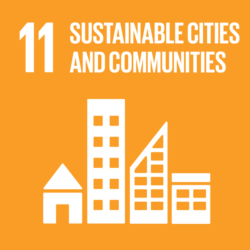
How to Create Sustainable Communities

With the SDGs and purposeful work we are showing the amazing things we can do when we put our minds to it.
Much like the notion that charity begins at home, we can’t forget that our homes need to reflect the lessons and realities found in the SDGs and purposeful work.
Sustainable and purposeful communities are where we need to be moving if we want society and humanity to thrive.
Let’s look at the various levels sustainable and purposeful worlds can take.
At the most basic level, of course, is sustainable and purposeful houses.
This is a great base to start from and something everyone should contemplate. How sustainable is your current residence and what can you do to make it more sustainable?
Green homes have so many benefits, from lower utility bills to better air quality to increased house value and lower maintenance costs. Most important, of course, is the reduced footprint these houses maintain.
Both Canada and the U.S. have building councils set up to help increase the number of green homes built in their countries. These councils are using the green building system of Leadership in Energy and Environmental Design (LEED) to help builders design and create better houses for us all.
On a more personal level there are simple steps like reducing electricity consumption and using sustainable building supplies.
A purposeful home recognizes the importance of every element of the home and how it can help attain sustainability. Everything from landscaping to materials to heating and utilities can be done in an eco-friendly way.
This is a great first step towards a better world and one I hope everyone is willing to take.
The next important step is the creation of sustainable and purposeful communities—eco-villages, as they’ve been called.
If it’s true that “it takes a village” these initiatives may be the way to spread the message to a wider audience about the importance of sustainable living and the ability of communities to do amazing things.
The good news is this idea is not a pipe dream and communities have begun to form.
In Canada there is New Seaton, a sustainable community just outside of Toronto that is home to great amenities like trails and parks as well as easy access to retail and businesses. Windmill Development Group has created Zibi, a community designed to demonstrate sustainability and creativity. Local shopping and entertainment options as well as a community centre designed to meet the recreational needs of the community mean Zibi will be a great sustainable place to live.
Spearheaded by BioRegional, the One Planet Communities initiative gives aspiring communities a framework to follow to achieve this level of sustainability.
Babcock Ranch in Florida serves as another great example of what sustainable neighbourhoods can look like, with community gardens and easy access to shopping and schools making it much easier for residents to live sustainably and purposefully.
These designed communities are a great way to promote sustainability to a larger audience and (with any luck) bring more people over to join the eco-fight.
Finally we’ll look at sustainable and purposeful cities. In that case major metropolis areas will be designed and operated in a way that minimizes humanity’s impact on the planet.
Although this may seem like a faraway pipe dream, cities in North America are already working towards this important goal.
Offering an increasing amount of renewable and clean energy, these cities (including Montreal, Vancouver, Winnipeg, Aspen, Eugene and Seattle) will reduce their footprint and their costs as they work towards 100% and a true level of sustainability.
Projects like the smart mobility plans created by Montreal and Seattle also add to the growing sustainability of these cities.
Enough of these sustainable cities could do an incredible amount of good, keeping us from the brink while allowing us to continue living quality lives.
Sustainability and green living. It starts at home but needs to grow until it reaches your community and then your wider world.
We are getting there. The movement is growing and will continue to grow as more and more people see the light.
The companies helping to create these sustainable communities are doing purposeful work, doing their part to put us on a better path.
Sustainable communities are the future. Are you ready?

